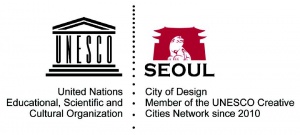Seoul - 1.1 Introduction
| Understanding Korea Series No.4 | ||
| ← Previous | Seoul | Next → |
| Acknowledgments | 1) Introduction | 2) Seoul as the Capital and a Local City |
The citizens of Seoul are proud of their city – the capital of the Republic of Korea and a political, economic and cultural focal point boasting more than 600 years of rich history and culture. Ever since it was named the capital of Joseon in 1394, Seoul continued to grow with the exception of the turbulent times of Japanese colonial rule and the Korean War and has emerged as the modern city it is today. The city rapidly grew to 10 million people and this has had numerous negative side effects, namely shortage of housing, traffic congestion and environmental destruction. Playing host to major international events such as the 1988 Seoul Olympic and the 2002 Korea-Japan World Cup has helped the city address these side effects over time. The city of Seoul recognized that the city has reached a certain state of stability in the urbanization process and is now in the process of establishing its identity as a creative, historical and cultural city. Following the designation as a member of the UNESCO City of Design’s Creative Cities’ Network, Seoul was named the World Design Capital in 2010.
How does a city called Seoul get projected in the eyes of global citizens? There are discrepancies in the Seoul that we, the residents in Korea, see and want to show to the world, and the Seoul that global citizens see. Seoul as portrayed in most Hollywood movies feels unfamiliar to us; it looks at least 20 to 30 years out of date that makes us wonder where this place is. Seoul is often depicted as a megacity with traffic and environmental problems created by rapid urbanization. This may be because the images of the fierce battlefield of the Korean War and a newly urbanized city that created ‘the Miracle on the Han River’ are firmly engraved in the minds of global citizens. Many textbooks in the world introduce Seoul as a mega-city that achieved drastic economic development and as a result is exposed to typical urban problems of overpopulation, shortage of housing, traffic congestion and environmental pollution. This is certainly different in many ways from the image Seoul is aiming to promote as a city with stable urban infrastructures and as a major global city with rich cultural resources and history.
The distorted portrayal of Seoul in movies may be forgivable, however, the inaccuracies in textbooks used in education must be corrected. The errors in textbooks may be the result of using outdated source materials or perhaps because it is not easy to approach materials written in Korean resulting in adoption of some inaccurate descriptions. This booklet aims to suggest reference materials that can be used to correct misrepresentations in textbooks around the world by providing objective information regarding Seoul based on findings presented in numerous recent reports, books and seminars. We intend to show various aspects of present day Seoul and its unique characteristics in terms of history, culture, urban development and renewal processes that set it apart from other cities around the world. We hope to assist global citizens view Seoul from a balanced perspective.
